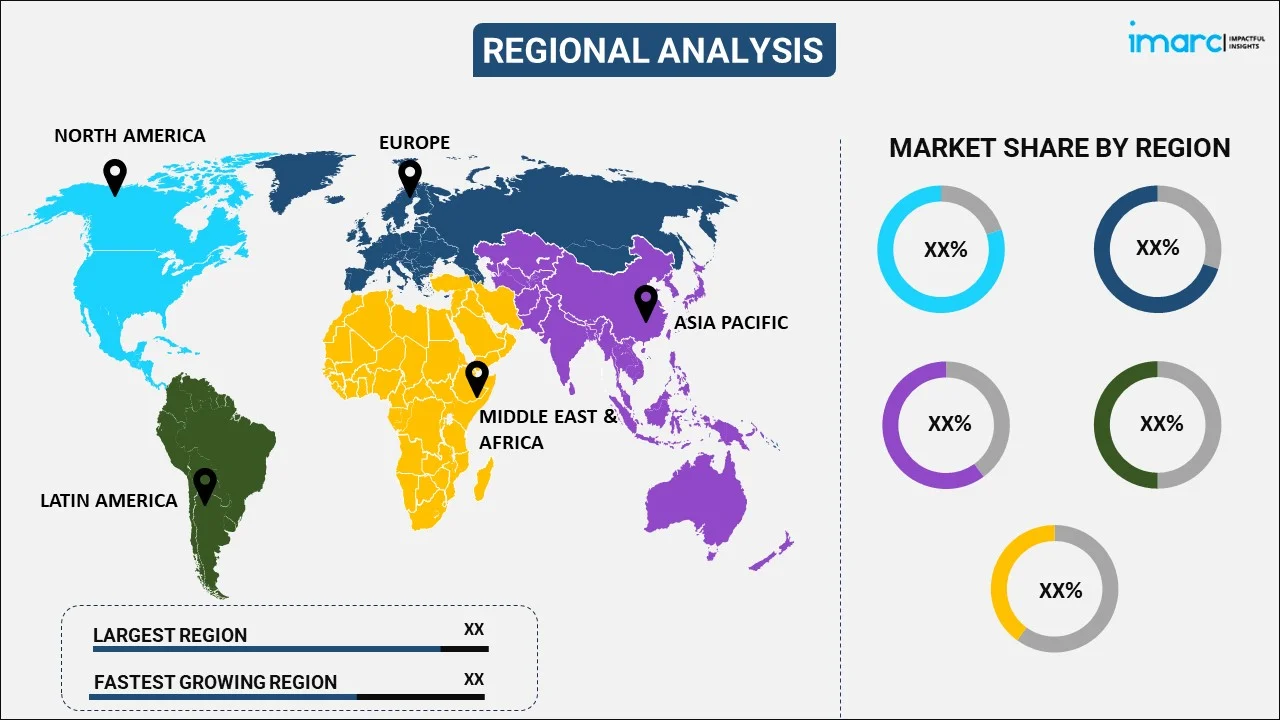
Screenless Display Market Report by Type (Visual Image, Retinal Display, Synaptic Interface), Application (Holographic Projection, Head-Mounted Display, Head-Up Display, and Others), Industry Vertical (Aerospace and Defense, Automotive, Healthcare, Consumer Electronics, and Others), and Region 2025-2033
Market Overview:
The global screenless display market size reached USD 5.1 Billion in 2024. Looking forward, IMARC Group expects the market to reach USD 46.1 Billion by 2033, exhibiting a growth rate (CAGR) of 26.46% during 2025-2033.
|
Report Attribute
|
Key Statistics
|
|---|---|
|
Base Year
|
2024
|
|
Forecast Years
|
2025-2033
|
|
Historical Years
|
2019-2024
|
| Market Size in 2024 | USD 5.1 Billion |
| Market Forecast in 2033 | USD 46.1 Billion |
| Market Growth Rate 2025-2033 | 26.46% |
Screenless display refers to a technology that enables the transmission of information using interactive projection technology without the help of a projector or display screen. It provides many advantages, including saving costs, presenting distant point images at high resolution, and providing low power consumption, compared to technologies like touch screen displays. Some of the screenless displays widely available in the market include holographic displays, virtual reality (VR) goggles, heads-up displays, virtual retinal displays, and synaptic interfaces.
Screenless Display Market Trends:
The rising demand for miniaturized solutions in various industry verticals represents one of the key factors driving the need for screenless displays worldwide. Apart from this, screenless display technology is gaining immense traction in the medical field as it allows healthcare professionals to view a virtual X-ray of infected areas or gather information concerning a patient. Moreover, the technology can be utilized in industrial processes to view virtual blueprints and identify parts placement and operation. Furthermore, as screenless displays help drivers to access data in real-time conveniently without taking their eyes off the road, rising consumer preferences for luxury and premium cars are contributing to the market growth. In addition, stringent government regulations for improving passenger and driver safety are compelling automotive manufacturers to incorporate screenless displays in passenger vehicles. Besides this, key market players are investing in research and development (R&D) activities to launch screenless consumer electronics, such as smartphones, computers, laptops, and cameras. These devices are lightweight and provide greater portability and high functionalities like map navigation. This, coupled with rapid urbanization and improving purchasing power of individuals, is anticipated to provide lucrative growth opportunities to industry investors.
Key Market Segmentation:
IMARC Group provides an analysis of the key trends in each sub-segment of the global screenless display market report, along with forecasts at the global, regional and country level from 2025-2033. Our report has categorized the market based on type, application and industry vertical.
Breakup by Type:
- Visual Image
- Retinal Display
- Synaptic Interface
Breakup by Application:
- Holographic Projection
- Head-Mounted Display
- Head-Up Display
- Others
Breakup by Industry Vertical:
- Aerospace and Defense
- Automotive
- Healthcare
- Consumer Electronics
- Others
Breakup by Region:

- North America
- United States
- Canada
- Asia-Pacific
- China
- Japan
- India
- South Korea
- Australia
- Indonesia
- Others
- Europe
- Germany
- France
- United Kingdom
- Italy
- Spain
- Russia
- Others
- Latin America
- Brazil
- Mexico
- Others
- Middle East and Africa
Competitive Landscape:
The competitive landscape of the industry has also been examined along with the profiles of the key players being BAE Systems plc, Eon Reality, Garmin Ltd., Holoxica Ltd., Microsoft Corporation, Microvision Inc., RealView Imaging Ltd., Sony Group Corporation, Synaptics Incorporated and Zebra Technologies Corporation.
Report Coverage:
| Report Features | Details |
|---|---|
| Base Year of the Analysis | 2024 |
| Historical Period | 2019-2024 |
| Forecast Period | 2025-2033 |
| Units | Billion USD |
| Segment Coverage | Type, Application, Industry Vertical, Region |
| Region Covered | Asia Pacific, Europe, North America, Latin America, Middle East and Africa |
| Countries Covered | United States, Canada, Germany, France, United Kingdom, Italy, Spain, Russia, China, Japan, India, South Korea, Australia, Indonesia, Brazil, Mexico |
| Companies Covered | BAE Systems plc, Eon Reality, Garmin Ltd., Holoxica Ltd., Microsoft Corporation, Microvision Inc., RealView Imaging Ltd., Sony Group Corporation, Synaptics Incorporated and Zebra Technologies Corporation. |
| Customization Scope | 10% Free Customization |
| Post-Sale Analyst Support | 10-12 Weeks |
| Delivery Format | PDF and Excel through Email (We can also provide the editable version of the report in PPT/Word format on special request) |
Key Questions Answered in This Report
The screenless display market was valued at USD 5.1 Billion in 2024.
IMARC estimates the screenless display market to exhibit a CAGR of 26.46% during 2025-2033.
The screenless display market is driven by advancements in augmented reality (AR) and holographic technologies, increased demand for innovative and portable display solutions, and the growing need for immersive user experiences across various industries.
North America dominates the market due to due to its high adoption of advanced technologies, strong presence of key players, and increasing investments in AR, VR, and holographic innovations across industries such as entertainment, healthcare, and defense.
Some of the major players in the screenless display market include BAE Systems plc, Eon Reality, Garmin Ltd., Holoxica Ltd., Microsoft Corporation, Microvision Inc., RealView Imaging Ltd., Sony Group Corporation, Synaptics Incorporated and Zebra Technologies Corporation., etc.
Need more help?
- Speak to our experienced analysts for insights on the current market scenarios.
- Include additional segments and countries to customize the report as per your requirement.
- Gain an unparalleled competitive advantage in your domain by understanding how to utilize the report and positively impacting your operations and revenue.
- For further assistance, please connect with our analysts.
 Inquire Before Buying
Inquire Before Buying
 Speak to an Analyst
Speak to an Analyst
 Request Brochure
Request Brochure
 Request Customization
Request Customization




.webp)




.webp)












